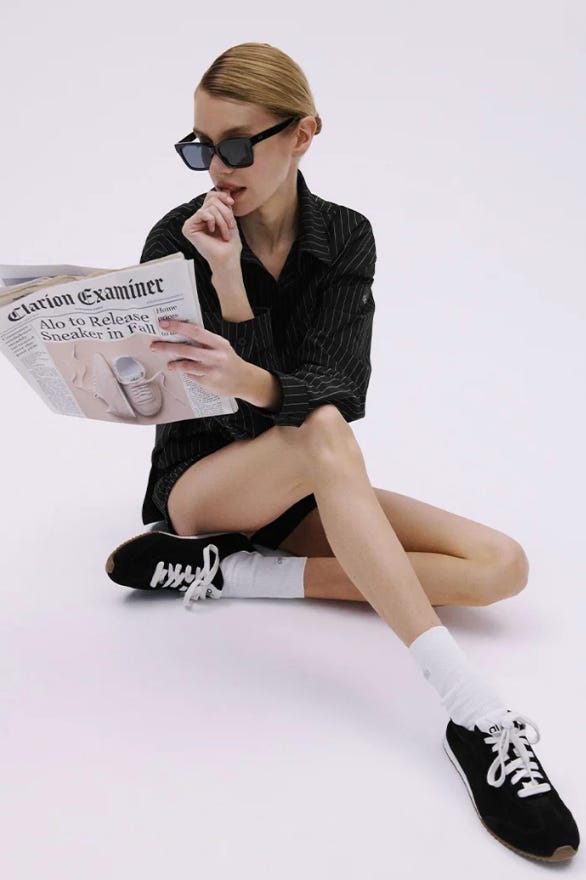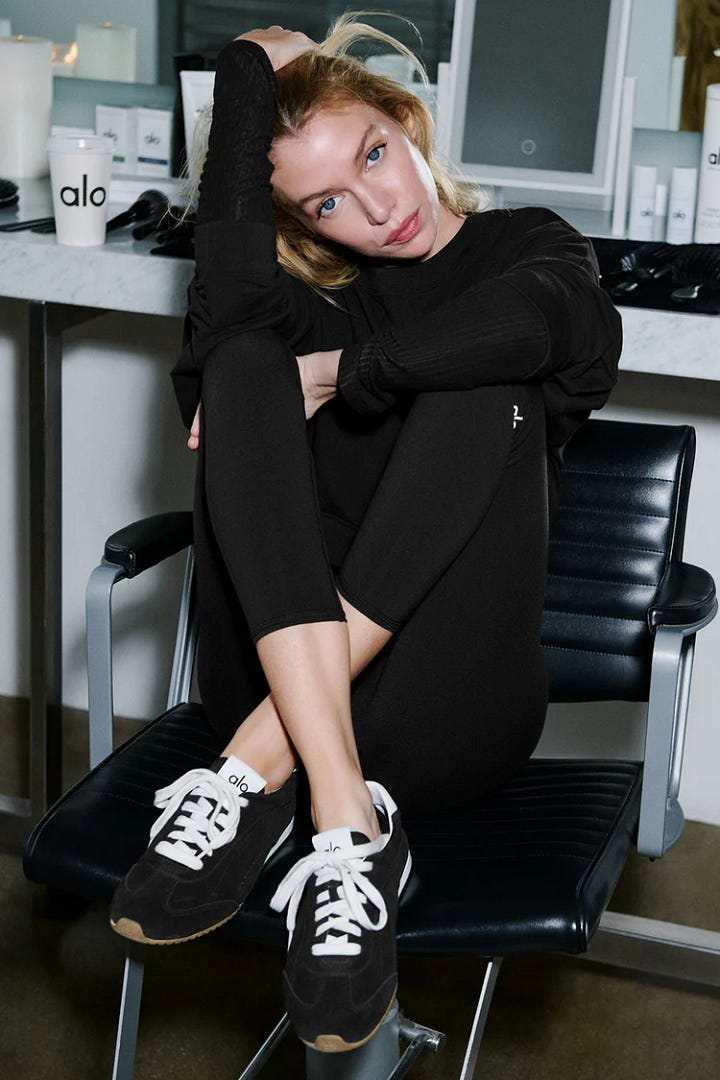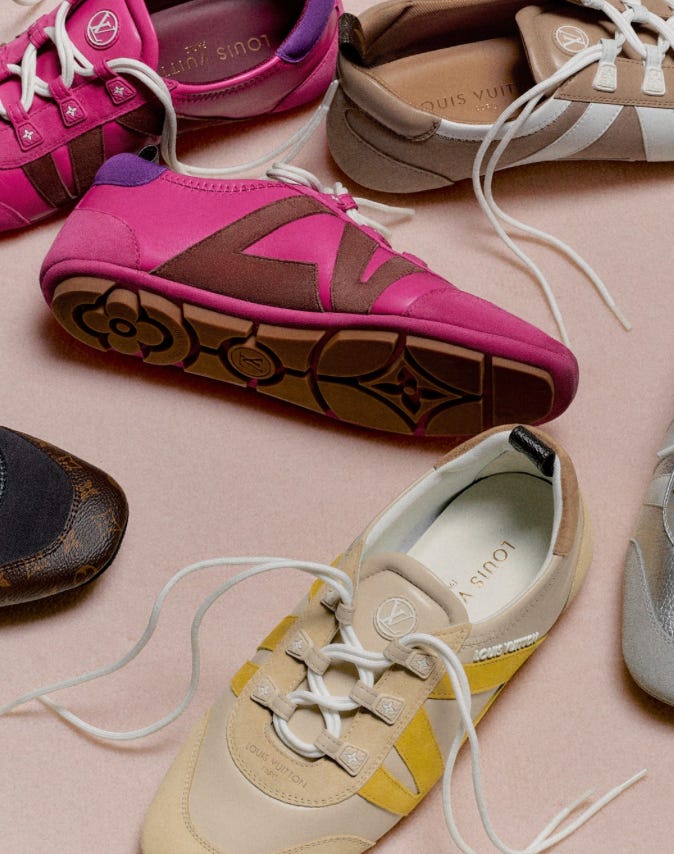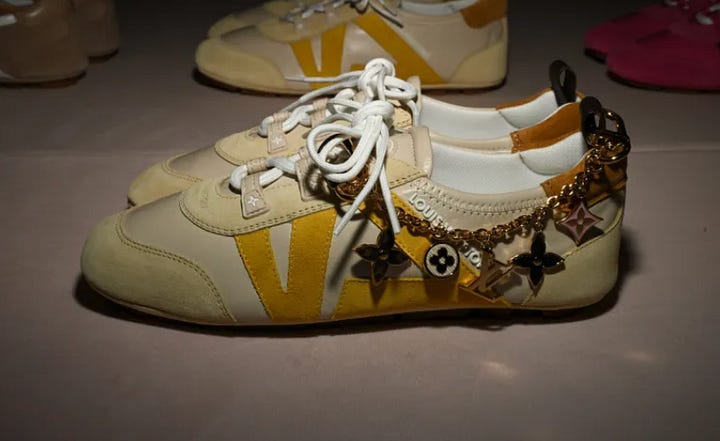Lifestyle as Strategy: The Alo Framework Legacy Brands Should Steal
The brands that survive this era will be the ones who know how to merchandise meaning — not just things.
Remember when Miu Miu made sneakers look like they belonged in an art school girl’s closet? The kind of girl who reads Annie Ernaux on the subway, wears socks with her ballet flats, and somehow knows every obscure French film director by name?
Well, plot twist: That same silhouette is now being worn to pilates. Paired with a $14 iced matcha. In a world coded by Alo.
And now, Alo made it official, again.
What Happened: Alo's Sunset Sneaker Drop
Last week, Alo launched its newest model: the Sunset Sneaker. It looks like it belongs in a Miu Miu editorial shoot — if that shoot happened in front of an Erewhon fridge.
Retailing at $225, the Sunset Sneaker is not about performance. It’s about aesthetics. It’s a soft nod to Sunset Boulevard and a louder nod to the pilates-matching-set, slicked-back-bun lifestyle Alo has come to define.


The Sneakerina Trend: From Subversion to Studio
Miu Miu arguably started the sneakerina wave (though credit is also due to Simone Rocha, who previewed the silhouette before Miu Miu made it viral). It wasn’t about sport — it was about subverting sport. Balletcore met irony. The girl wearing them knew exactly what she was doing.
But then TikTok happened. Coquette-core happened. Social media flattened the nuance. And the aesthetic trickled down into pilates studios and clean-girl moodboards.
What was once subversive became sporty spice with a matcha habit.
The Genius Business Part: Alo's Merchandising Playbook – Copy the Customer
Since entering the shoe category in 2023, Alo has dropped:
A runner that looks like a Hoka
A plush Recovery Mode that channels UGGs
A chunky white sneaker reminiscent of Air Force 1s
And now, the sneakerina
Alo didn’t invent these styles — and they’re not trying to. They’re not design leaders. They’re merchandisers. Their product roadmap doesn’t set trends — it reflects what their customer already owns, wants, and posts revolving their existing lifestyles.
They study the pilates girl, the matcha girl, the clean-girl-aesthetic Instagram influencer — then merchandise back to her exactly what she already likes, wrapped in Alo packaging.
It's not design innovation. It’s merchandising engineered by social media algorithms and decisions backed by brand context.
And this is where so many legacy fashion houses falter. Louis Vuitton recently launched its own version of the sneakerina — but it lacked the cultural context to make it resonate. The silhouette was there, but the story wasn’t.


Alo, by contrast, is writing its own heritage in real time — a heritage driven by algorithmic aesthetics, sure, but no less effective. Meanwhile, brands like LV seem to have forgotten their own.
Here’s the irony: the very brands with deep histories and cultural capital associated with lifestyles often fail to activate it. Instead of building on their DNA, they chase superficial trend codes with no real connection to the lifestyle they once defined. Alo, on the other hand, starts with lifestyle — and reverse-engineers desire from there.
Lessons for Legacy Luxury: Merchandising Starts with Behaviors, Not Products
Heritage isn’t a relic. It’s a living code. And in today’s market, that code must be translated into relevant, behavioral aspiration — not just logos and legacy.
Alo proves that modern merchandising success lies in decoding your customer’s lifestyle, starting with behavior, not product. And the brands that survive this era will be the ones who know how to merchandise meaning — not just things. And Alo? They’re playing the game flawlessly.
The Bottom Line
Everyone’s asking who will replace Alo the way it replaced Lululemon.
Short answer? It’s hard to dethrone a brand that’s built like a wellness cult for the algorithmic age — complete with merch.
Their legacy? A meticulously engineered lifestyle fantasy.
And their latest sneaker? Just another altar.
x Patricia
For quick, spicy takes → Follow me on Instagram
For deeper convos and industry moves → Connect with me on LinkedIn


